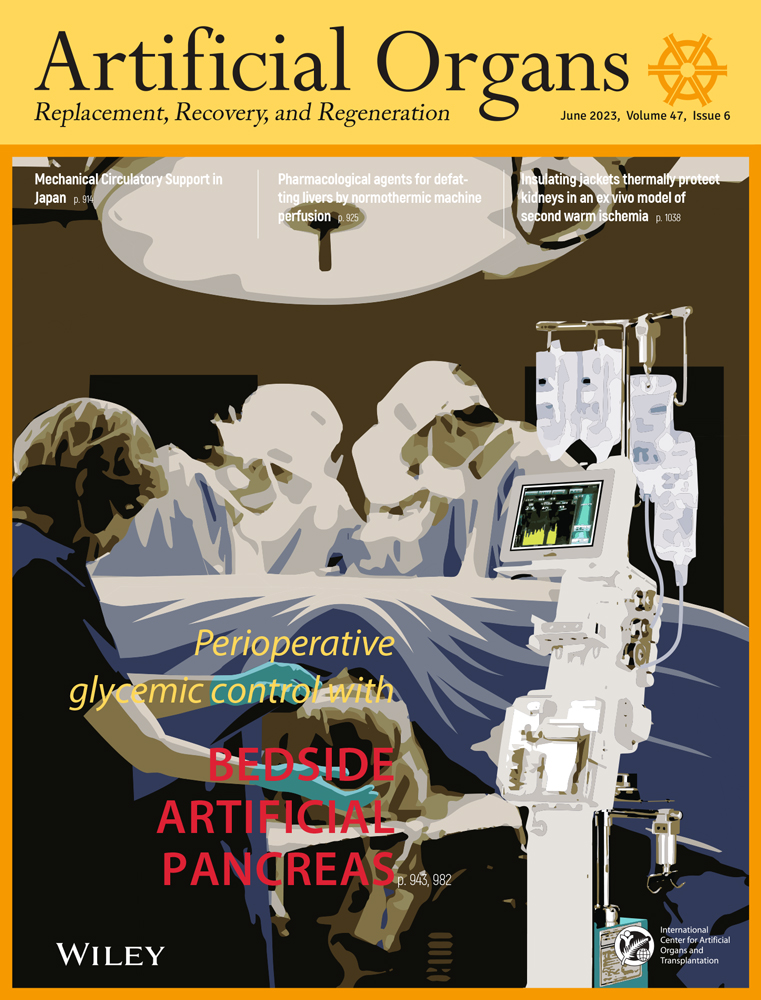Sodium bicarbonate alters protein stability and blood coagulability in a simulated Impella purge gap model
Kaitlyn R. Ammann and Jun Ding equally contributed to the paper.
Abstract
Background
The Impella® microaxial blood pumps utilize purge fluid containing heparin to prevent biofouling of internal surfaces. Purge fluid interfaces with blood or blood components at two notable internal locations: (1) 5–8 μm radial gap (“Radial Gap” or “Gap 1”) between the motor shaft and bearing, a site accessible by blood proteins or small molecules; and (2) 100 μm axial gap (“Axial Gap” or “Gap 2”) between the impeller rotor and bearing, the site of mixing with larger circulating blood components. Despite its efficacy, heparin in the purge fluid complicates overall patient anticoagulation management. Here, we investigate sodium bicarbonate as an alternative to heparin in the purge fluid in a simulated purge gap micro-environment.
Methods
To assess protein stability simulated at Gap 1, human serum albumin (HSA; 40 mg/ml) species were quantified utilizing size exclusion liquid chromatography (SEC-HPLC) after stirring with purge fluid (5% dextrose in water (D5W) with heparin (25 U/ml) or sodium bicarbonate (25 or 50 mEq/L)) over a 24-h period. pH measurements were taken immediately prior to stirring. Mixing between blood and purge fluid at Gap 2 was mimicked in vitro utilizing a 60:40 blood: purge fluid ratio. Purge fluid consisted of D5W with or without sodium bicarbonate (25 or 50 mEq/L). Human citrated blood samples were freshly collected with or without the addition of heparin (5 U/ml). Coagulability was determined via thromboelastography (TEG). pH measurements of blood mixtures were taken immediately before and after TEG analysis.
Results
Sodium bicarbonate alone or synergistically with heparin was effective in increasing protein stability, increasing pH, and reducing coagulability. In the Gap 1 model, sodium bicarbonate led to preservation of HSA monomer after 24 h mixing, with monomer composing 88.3 ± 2.3% and 88.6 ± 0.9% of total HSA species for 25 or 50 mEq/L sodium bicarbonate, respectively. Only 60.4 ± 4.3% monomer was observed with D5W alone (p < 0.005). HSA aggregates and fragments were evident in heparin and D5W purge mixtures, but absent in sodium bicarbonate (25 and 50 mEq/L). pH of HSA mixtures significantly increased in the presence of sodium bicarbonate. In the Gap 2 model, combined heparin (5 U/ml) and sodium bicarbonate prolonged clotting time (TEG-ACT), leading to an average increase of 795 ± 275 s (p = 0.04) and 846 243 s (p = 0.03). This trend of reduced coagulability was similarly observed in clot initiation time (R time), clot formation time (K time), and clotting rate (α angle). Blood mixture pH measurements increased with addition of sodium bicarbonate in both heparinized and non-heparinized blood samples.
Conclusion
Sodium bicarbonate in the purge fluid has the potential to significantly increase protein stability and reduce protein denaturation at the Impella® radial gap (Gap 1), while reducing blood coagulation at the Impella® axial gap (Gap 2). The influence of sodium bicarbonate on the biochemical environment of the purge fluid may ensure stable purge flow resistance and play a synergistic or supportive role in the purge gap micro-environment when used with systemic anticoagulation.
CONFLICT OF INTEREST STATEMENT
Jun Ding, Vladimir Gilman and Scott Corbett are employees of Abiomed. Kaitlyn R. Ammann and Marvin J. Slepian declare no conflictof interest.




